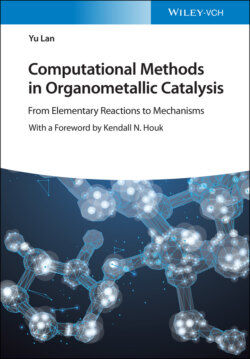Читать книгу Computational Methods in Organometallic Catalysis - Yu Lan - Страница 30
2.3.2 Pople's Basis Sets
ОглавлениеAs most of chemistry focuses on the action of the valence electrons, Pople developed the split‐valence basis sets, single zeta in the core and double zeta in the valence region, which won him the 1998 Nobel prize in chemistry. A double‐zeta split‐valence basis set for carbon has three s basis functions and two p basis functions for a total of nine functions, a triple‐zeta split valence basis set has four s basis functions and three p functions for a total of 13 functions, and so on.
For the vast majority of basis sets, including the split‐valence sets, the basis functions are not made up of a single Gaussian‐type function. Rather, a group of Gaussian‐type functions are contracted together to form a single basis function. An example is split‐valence basis set 6‐31G, which is popular in computational organic chemistry. In this basis set, the left value means that each core basis function comprises six Gaussian functions. Meanwhile, the valence space is split into two basis functions, which referred to the inner and outer parts of valence space. The inner basis function is composed of three contracted Gaussian‐type functions, and each outer basis function is a single Gaussian‐type function. Thus, for carbon, the core region is a single s basis function made up of six s‐GTOs. The carbon valence space has two s and two p basis functions. The inner basis functions are made up of three Gaussians, and the outer basis functions are each composed of a single Gaussian‐type function. Therefore, the carbon 6‐31G basis set has nine basis functions made up of 22 Gaussian‐type functions. This type of split‐valence basis sets involves 3‐21G, 4‐31G, 6‐31G, 6‐311G, etc. [69–72]. The accuracy of those basis sets depends mainly on the number of basis functions, and secondly on the number of Gaussians. However, the time consumed in calculation increases accordingly with the improvement of accuracy.
